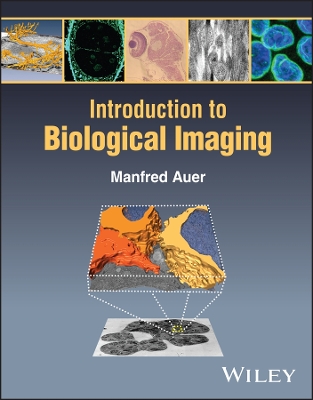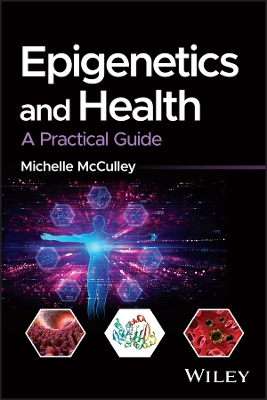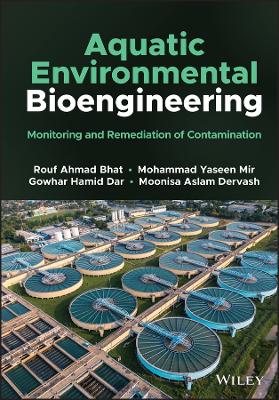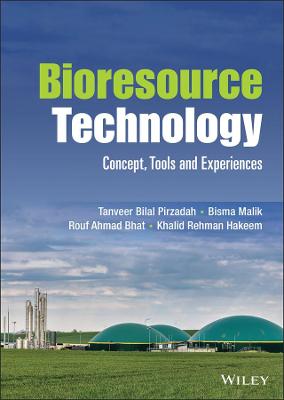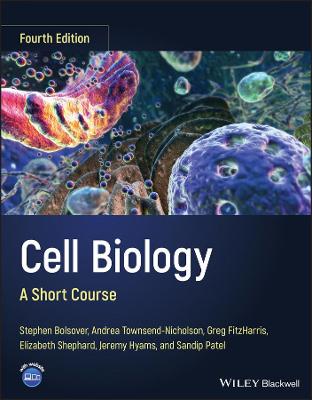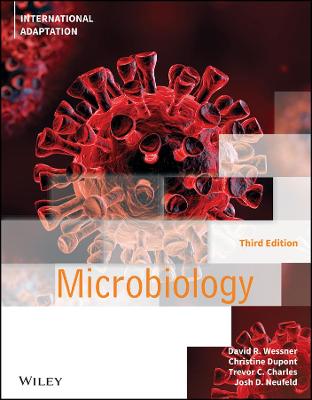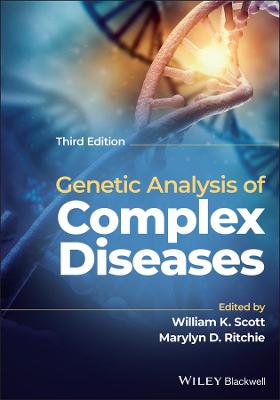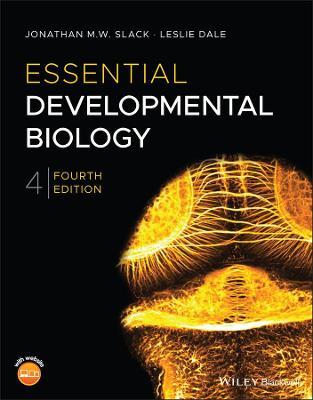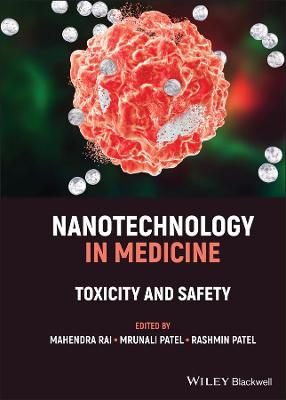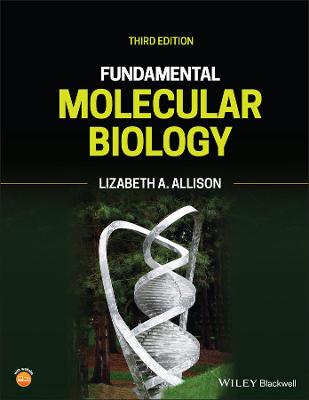Bioprospecting of Microorganism-Based Industrial Molecules
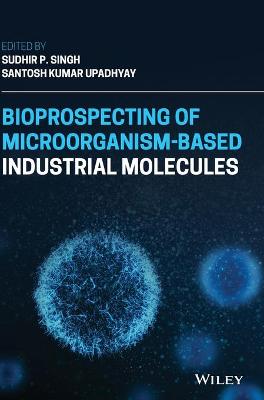 -10%
portes grátis
-10%
portes grátis
Bioprospecting of Microorganism-Based Industrial Molecules
Upadhyay, Santosh Kumar; Singh, Sudhir P.
John Wiley & Sons Inc
01/2022
448
Dura
Inglês
9781119717249
15 a 20 dias
986
List of Contributors xviii
Preface xxiii
Acknowledgments xxiv
1 An Introduction to Microbial Biodiversity and Bioprospection 1
Tomoya Shintani, Santosh Kumar Upadhyay, and Sudhir P. Singh
1.1 Introduction 1
1.1.1 Microorganisms 1
1.1.2 Bioprospecting 1
1.1.3 Bioprospection of Microorganisms 2
1.2 Conclusions and Perspectives 3
Acknowledgment 4
References 4
2 Application of Microorganisms in Biosurfactant Production 6
Lorena Pedraza- Segura, Luis V. Rodriguez- Duran, Gerardo Saucedo- Castaneda, and Jose de Jesus Cazares- Marinero
2.1 Biosurfactants Nature and Classification 6
2.2 Biosynthesis of BS by Archaea and Bacteria 12
2.3 Biosynthesis of BS by Yeasts and Molds 14
2.4 Screening for BS Producers 15
2.5 A Case Study: SL by Solid- State Fermentation (SSF), Kinetics, and Reactor Size Estimation 16
2.6 Conclusions and Perspectives 23
References 24
3 Microbial Gums: Current Trends and Applications 31
Rwivoo Baruah and Prakash M. Halami
3.1 Introduction 31
3.2 Biosynthesis of Microbial Gums 32
3.3 Production of Microbial Gums 33
3.4 Structure and Properties of Microbial Gums 34
3.5 Types of Microbial Gums 34
3.5.1 Xanthan Gum 36
3.5.2 Sphingans 36
3.5.2.1 Gellan Gum 36
3.5.2.2 Welan Gum 37
3.5.2.3 Rhamsan Gum 37
3.5.2.4 Diutan Gum 38
3.5.3 Pullulan 38
3.5.4 Other Microbial Gums 38
3.6 Applications of Microbial Gums 39
3.6.1 Food Applications 40
3.6.2 Biomedical Applications 41
3.6.3 Applications in Nanotechnology 42
3.7 Conclusions and Perspectives 42
Acknowledgments 43
References 43
4 Antiaging and Skin Lightening Microbial Products 47
Prabuddha Gupta, Ujwalkumar Trivedi, Mahendrapalsingh Rajput, Tejas Oza, Jasmita Chauhan, and Gaurav Sanghvi
4.1 Introduction 47
4.2 Aging 48
4.2.1 Structure of Skin 48
4.2.2 Skin Aging Factors 50
4.2.3 Intrinsic Skin Aging Factors 50
4.2.3.1 Anatomical and Histological Changes 50
4.2.3.2 Telomere Shortening 50
4.2.3.3 Metabolic ROS Production 51
4.2.3.4 Upregulation of Matrix Metalloproteinases 51
4.2.3.5 Mitochondrial Dysfunction 51
4.2.3.6 Mutations and Oncogenesis 51
4.3 Extrinsic Skin Aging Factors 52
4.3.1 Photoaging 52
4.3.2 Tobacco Smoking 52
4.3.3 Air Pollution 53
4.4 Why Microbes 53
4.4.1 Bacterial Compounds 54
4.4.2 Polysaccharides and Oligosaccharides 54
4.4.2.1 Hyaluronic Acid 54
4.4.2.2 Bacterial Cellulose 55
4.4.2.3 Astaxanthin and Equol 55
4.4.3 Fungi Compounds 56
4.4.3.1 Tyrosinase Inhibition 56
4.4.3.2 Hyaluronidase Inhibition 56
4.4.3.3 Collagenase and Elastase Inhibition 57
4.4.4 Algae Compounds 57
4.4.4.1 Carbohydrates from Algae 58
4.4.4.2 Fucoidan 60
4.4.4.3 Laminaran 60
4.4.4.4 Ulvans 60
4.4.4.5 Porphyran 61
4.4.4.6 Carrageenan 61
4.4.4.7 Agar 61
4.4.4.8 Alginic Acids 62
4.4.5 Pigments from Algae 62
4.4.5.1 Phycobiliproteins 62
4.4.5.2 Chlorophylls 64
4.4.5.3 Carotenoids 64
4.4.5.4 ?- carotene 64
4.4.5.5 Canthaxanthins 66
4.4.5.6 Astaxanthin 66
4.4.5.7 Fucoxanthin 66
4.4.5.8 Zeaxanthin 66
4.4.5.9 Violaxanthin 66
4.4.6 Secondary Metabolites 67
4.5 Conclusions and Perspectives 67
References 68
5 Application of Microorganisms in Bioremediation 77
Himani Thakkar and Vinnyfred Vincent
5.1 Introduction 77
5.2 Microbial Bioremediation 78
5.3 Microbial Bioremediation of Organic Pollutants 79
5.3.1 Bioremediation of Alkanes 79
5.3.2 Bioremediation of Benzene, Toluene, Ethylbenzene, and Xylenes (BTEX) 80
5.3.3 Bioremediation of Polyaromatic Hydrocarbons 80
5.3.3.1 Degradation of High- Molecular- Weight Polyaromatic Hydrocarbons 83
5.3.4 Fungal Degradation of Polyaromatic Hydrocarbons 83
5.3.4.1 Bioremediation of PAHs by Ligninolytic Fungi 84
5.3.4.2 Catabolism of PAHs by Non- Ligninolytic Fungi 84
5.3.5 Bioremediation of Pesticides by Microbes 84
5.4 Microbial Degradation of Heavy Metals 87
5.5 Factors Affecting Bioremediation 89
5.5.1 Abiotic Factors 90
5.5.2 Biotic Factors 91
5.6 Advances in Bioremediation 91
5.7 Conclusions and Perspectives 94
References 95
6 Microbial Applications in Organic Acid Production 104
Jyoti Singh Jadaun, Amit K. Rai, and Sudhir P. Singh
6.1 Introduction 104
6.2 Glycolic acid (2C) 105
6.3 Acetic Acid (2C) 108
6.4 Pyruvic Acid (3C) 108
6.5 Lactic Acid (3C) 109
6.6 Succinic Acid (4C) 109
6.7 Fumaric Acid (4C) 110
6.8 Malic Acid (4C) 111
6.9 Itaconic Acid (5C) 112
6.10 Gluconic Acid (6C) 113
6.11 Citric Acid (6C) 114
6.12 Kojic Acid (6C) 114
6.13 Muconic and Adipic Acid (C6) 115
6.14 Conclusions and Perspectives 117
Acknowledgments 117
References 117
7 Production of Bioactive Compounds vs. Recombinant Proteins 125
Maria F. Salazar Affonso, Debora Bublitz Anton, Daniel Kuhn, Bruno Dahmer, Camile Wuensch, Veronica Contini, Luis F. Saraiva Macedo Timmers, Claucia F. Volken de Souza, Marcia I. Goettert, and Rodrigo G. Ducati
7.1 Introduction 125
7.2 In vitro Cell-Based Assays 126
7.3 Cell Viability Assays 127
7.4 Cell Metabolic Assays 127
7.5 Cell Survival Assays 128
7.6 Cell Transformation Assays 129
7.7 Cell Irritation Assays 129
7.8 Heterologous Expression of Recombinant Proteins of Biomedical Relevance 130
7.9 Lactic Acid Bacteria and the Production of Metabolites with Therapeutic Roles 132
7.10 Preclinical Studies 134
7.10.1 Acute Toxicity 135
7.10.2 Repeated Dose Toxicity 136
7.10.3 Genotoxicity 136
7.10.4 Carcinogenicity 136
7.10.5 Reproductive Toxicity 137
7.11 Computer-aided Drug Design 137
7.12 Conclusions and Perspectives 140
References 140
8 Microbial Production of Antimicrobial and Anticancerous Biomolecules 147
M. Indira, T. C. Venkateswarulu, S. Krupanidhi, and K. Abraham Peele
8.1 Introduction 147
8.2 Microbial Sources 148
8.2.1 Bacteria 148
8.2.2 Fungi 149
8.2.3 Actinomycetes 150
8.2.4 Extremophiles 150
8.3 Microbial Bioprospecting Methods 151
8.3.1 Cultural Bioprospecting 151
8.3.2 Nonculturable Microorganism's Bioprospecting 152
8.3.3 In Silico Bioprospecting of Microorganisms 152
8.4 Bioactive Compounds 153
8.4.1 Antibiotics 155
8.4.2 Bacteriocins 155
8.4.3 Biosurfactants 156
8.4.4 Exopolysaccharides 156
8.4.5 Enzymes 157
8.4.6 Biopolymers 158
8.4.7 Bioenergy Compounds 158
8.4.8 Anticancer Compounds 158
8.5 Future Prospects 160
8.6 Conclusions and Perspectives 160
Acknowledgments 161
References 161
9 Microbial Fuel Cells and Plant Microbial Fuel Cells to Degradation of Polluted Contaminants in Soil and Water 170
Chung-Yu Guan and Chang-Ping Yu
9.1 Introduction 170
9.2 History 172
9.3 Electricigens 173
9.3.1 Electricigens of Bacteria 173
9.3.2 Electrocigens of Fungi 175
9.4 Electron Generation and Transfer Mechanisms of Electricigens 175
9.4.1 Electron Generation Mechanism 175
9.4.2 Electron Transfer Mechanism 175
9.4.3 Biofilm Mechanism 176
9.4.4 Electron Shuttle Mechanism 176
9.4.5 Electron Transfer by Exogenous Mediators 176
9.4.6 Microbial Secondary Metabolites for Electron Transfer 177
9.4.7 Oxidation of Reduced Primary Metabolites 177
9.5 Materials 177
9.5.1 Anode Materials 177
9.5.2 Base Materials of the Anode 177
9.5.3 The Modification of Anode Materials 178
9.5.4 Cathode Materials 179
9.5.5 Carbon-Based Materials of Cathodes 179
9.5.6 Non-Carbon-Based Materials 179
9.5.7 Cathode Catalyst 180
9.5.8 Biocathode 181
9.5.9 Separator Materials 181
9.5.9.1 Conventional Separator Materials 181
9.5.9.2 New Separator Materials 181
9.6 Design and Operation of Bioelectrochemical Systems 182
9.6.1 MFC Configuration 182
9.6.1.1 Two-Compartment MFCs 182
9.6.1.2 Air Cathode MFC 184
9.6.1.3 Other Configurations 185
9.6.2 Soil MFC and PMFC Configurations 185
9.6.2.1 Dual-Chamber of Soil MFCs and PMFCs 185
9.6.2.2 Single-Chamber MFCs 186
9.6.2.3 Air-Diffusion Cathode System 186
9.6.2.4 Other Configuration of PMFCs 187
9.7 Performances of the MFCs in Actual Wastewater Treatment 187
9.7.1 Industrial Wastewater 187
9.7.2 Domestic and Livestock Wastewater 188
9.8 Soil MFCs for Soil Remediation 189
9.8.1 Remediation of Organic Contaminated Soils 189
9.8.2 Remediation of Heavy Metal Contaminated Soils 189
9.9 PMFCs for Environmental Remediation 190
9.9.1 PMFCs for Wastewater Treatment 190
9.9.2 PMFCs for Soil Remediation 190
9.10 Prospectives 191
9.11 Conclusions 191
References 192
10 Microalgae- Based UV Protection Compounds 201
Jorge Alberto Vieira Costa, Juliana Botelho Moreira, Gabrielle Guimaraes Izaguirres, Liliane Martins Teixeira, and Michele Greque de Morais
10.1 Introduction 201
10.2 UV Radiation 202
10.3 Protection Compounds Induced by UV Radiation 202
10.3.1 Mycosporine- Like Amino Acids 203
10.3.2 Phenolic Compounds 203
10.3.3 Carotenoids 203
10.3.4 Phycocyanin 204
10.3.5 Polyamines 204
10.3.6 Scytonemin 205
10.4 Microalgal Biotechnology for the Production of Photoprotective Compounds 206
10.5 Effects of UV Radiation on the Growth, Morphology, and Production of Lipids, Proteins, and Carbohydrates 209
10.6 Extraction Methods of Photoprotective Compounds 211
10.7 Prospects for Commercial Applications 213
10.8 Conclusion and Perspectives 215
References 215
11 Microorganisms as a Potential Source of Antioxidants 225
Ayerim Hernandez-Almanza, Nathiely Ramirez-Guzman, Gloria A. Martinez-Medina, Araceli Loredo-Trevino, Deepak Kumar Verma, and Cristobal N. Aguilar
11.1 Introduction 225
11.2 Antioxidant-Producing Microorganisms 225
11.3 Production of Some Microbial Antioxidants and Their Action Mechanisms 226
11.3.1 Peptides 226
11.3.2 Pigments 227
11.3.3 Polyphenols 229
11.4 Extraction and Purification of Microbial Antioxidants 230
11.4.1 Extraction of Microbial Antioxidants 230
11.4.2 Purification of Microbial Antioxidants 231
11.5 Evaluation of Antioxidant Activity 231
11.5.1 Classical Methods 232
11.5.2 Cellular Methods 234
11.6 Conclusions and Perspectives 235
References 236
12 Microbial Production of Biomethane from Digested Waste and Its Significance 242
Arun Kumar Pal, Vijay Tripathi, Prashant Kumar, and Pradeep Kumar
12.1 Introduction 242
12.2 Methane 243
12.2.1 Source of Methane 243
12.2.1.1 Industry 244
12.2.1.2 Agriculture 244
12.2.1.3 Waste 244
12.2.2 Biomethane 245
12.3 Types of Waste 245
12.3.1 Biological Waste 247
12.3.2 Household Waste 247
12.3.3 Agricultural Waste 248
12.4 Digestion Processes of Organic Wastes 248
12.4.1 Hydrolysis of Organic Waste 248
12.4.2 Acidogenesis of Hydrolyzed Matter 249
12.4.3 Acetogenesis 249
12.4.3.1 Methanogenesis 250
12.5 Conclusions and Perspectives 250
Acknowledgments 250
Conflicts of Interest 250
References 250
13 Enzymatic Biosynthesis of Carbohydrate Biopolymers and Uses Thereof 254
Manisha Sharma, Jyoti Singh Jadaun, Santosh Kumar Upadhyay, and Sudhir P. Singh
13.1 Introduction 254
13.2 Dextran 255
13.2.1 Mechanism of Dextran Production 255
13.2.2 Production of Dextran at Industrial Level 255
13.2.3 Applications of Dextran 256
13.3 Chitin and Chitosan 256
13.3.1 Biological Extraction of Chitin 257
13.3.1.1 Biosynthesis of Chitin and Chitosan 257
13.3.1.2 Chitin and Chitosan- Producing Fungi 257
13.3.1.3 Enzymatic Deproteinization 257
13.3.1.4 Fermentation 259
13.3.1.5 Enzymatic Deacetylation 259
13.3.2 Applications of Chitin and Chitosan 259
13.4 Xanthan Gum 260
13.4.1 Xanthan Gum Production 260
13.4.2 Microbial Production 261
13.4.3 Applications of Xanthan Gum 261
13.5 Bacterial Cellulose 261
13.5.1 Biosynthetic Pathway for Cellulose Production 261
13.5.2 Cellulose Precursor 262
13.5.3 Microbial Source for Cellulose Production 262
13.5.4 Applications of Cellulose 263
13.6 Levan 263
13.6.1 Levan Producing Organism 264
13.6.2 Mechanism for Levan Biosynthesis 264
13.6.3 Strategies for Levan Production 265
13.6.4 Applications of Levan 265
13.7 Conclusions and Perspectives 266
Acknowledgments 266
References 266
14 Polysaccharides from Marine Microalgal Sources 278
Ratih Pangestuti, Evi Amelia Siahaan, Yanuariska Putra, and Puji Rahmadi
14.1 Introduction 278
14.2 Polysaccharides from Marine Microalgae 279
14.2.1 Subcritical Water Hydrolysis 280
14.2.2 Ultrasonic- Aided Extraction 281
14.2.3 Microwave- Assisted Extraction 282
14.2.4 Enzyme- Assisted Extraction 282
14.3 Optimization of Microalgae Culture Conditions 282
14.4 Bioactivities and Potential Health Benefits 285
14.4.1 Antiviral Activity 285
14.4.2 Antioxidant 286
14.4.3 Anticancer 287
14.4.4 Immunomodulatory 288
14.5 Conclusions and Perspectives 288
Acknowledgment 288
References 289
15 Microbial Production of Bioplastic: Current Status and Future Prospects 295
Karishma Seem
15.1 Introduction 295
15.2 General Structure of PHA 297
15.3 Physical Properties 298
15.4 Biodegradability of PHA 298
15.5 Biosynthesis of PHA 299
15.6 Challenges of Scaling Up of PHA Production on an Industrial Scale 300
15.6.1 Renewable Sources as Feedstock for PHA Production 300
15.6.1.1 Food Processing and Agricultural Industries Discharge 300
15.6.1.2 Glycerol 301
15.6.1.3 Agro- Industrial Oily Wastes 301
15.6.2 Cyanobacteria 302
15.6.3 Bacteria from Extreme Niches 303
15.6.3.1 Halophilic Bacteria 303
15.6.3.2 Thermophiles for PHA 304
15.6.3.3 Psycrophiles for PHA 304
15.7 Co- synthesis of PHA with Value- Added Products 304
15.8 Blends of PHA 305
15.9 Applications of PHA 306
15.9.1 Biomedical Applications 306
15.9.2 Soft Tissue Implants 307
15.9.3 Esophagus, Pericardial Patches 307
15.9.4 Heart Valve Tissue Engineering 307
15.9.5 Nerve Regeneration 308
15.9.6 Drug Delivery System 308
15.10 Conclusions and Perspectives 309
References 309
16 Microbial Enzymes for the Mineralization of Xenobiotic Compounds 319
Ankita Chatterjee, Pritha Chakraborty, and Jayanthi Abraham
16.1 Introduction 319
16.2 Major Pollutants and Their Removal with White- Rot Fungi 320
16.2.1 Pesticides 320
16.2.2 Polychlorinated Biphenyls 321
16.2.3 Polycyclic Aromatic Hydrocarbons 321
16.2.4 Synthetic Dyes 322
16.2.5 Synthetic Polymers 322
16.2.6 Phenolic Compounds 322
16.2.7 Petroleum Hydrocarbons 323
16.3 Enzyme System of White- Rot Fungi 323
16.3.1 Laccase 323
16.3.1.1 Mechanisms 327
16.3.2 Lignin Peroxidase 328
16.3.3 Manganese Peroxidase 329
16.3.3.1 Mechanism 329
16.3.4 Other Enzymes 330
16.4 Molecular Aspect 330
16.5 Conclusions and Perspectives 331
Acknowledgement 331
Compliance with Ethical Guidelines 332
References 332
17 Functional Oligosaccharides and Microbial Sources 337
SA Belorkar
17.1 Introduction 337
17.1.1 What Are Functional Foods? All You Need to Know 338
17.2 Inulin and Oligofructose: The Preliminary Functional Oligosaccharides 339
17.3 GRAS and FOSHU Status 339
17.4 Conventional and Upcoming Oligosaccharides 339
17.5 Microbes and Functional Oligosaccharides 340
17.6 Arabinoxylo- Oligosaccharides 340
17.7 Sources and Properties 341
17.8 Approaches for AXOS Production 341
17.9 Isomaltooligosaccharides 342
17.10 Sources and Properties 343
17.11 Production of IMO 344
17.12 Approaches to Improve IMO Production 344
17.13 Lactosucrose 345
17.14 Novel Approaches in Lactosucrose Preparation 347
17.15 Xylooligosaccharides 347
17.16 Occurrence and Properties 348
17.17 Approaches to Improve the Efficiency of XOS 349
17.18 Conclusions and Perspectives 349
References 350
18 Algal Biomass and Biofuel Production 357
Suman Sanju, Aditi Thakur, Pragati Misra, and Pradeep Kumar Shukla
18.1 Introduction 357
18.2 Biofuels 357
18.2.1 First-Generation Biofuels 358
18.2.2 Second-Generation Biofuels 358
18.2.3 Third-Generation Biofuels 359
18.3 Algae: The Biomass 359
18.4 Microalgae as Biofuel Biomass 360
18.5 Microalgae Culture Systems 362
18.5.1 Open Algal Systems 362
18.5.2 Closed Algal Systems 363
18.5.3 Hybrid Algal Systems 363
18.6 Microalgae Harvesting 364
18.7 Processing and Extraction of Components 364
18.8 Biofuel Conversion Processes 364
18.8.1 Transesterification 365
18.8.2 Biochemical Methods 366
18.8.2.1 Fermentation 366
18.8.2.2 Anaerobic Digestion 366
18.8.3 Thermochemical Conversions 367
18.8.3.1 Gasification 367
18.8.3.2 Pyrolysis 367
18.8.3.3 Liquefaction 368
18.8.4 Direct Combustion 368
18.9 Microalgal Biofuels 368
18.9.1 Biodiesel 368
18.9.2 Bioethanol 369
18.9.3 Biogas 370
18.9.4 Bio-Oil and Bio-Syngas 370
18.9.5 Biohydrogen 371
18.10 Conclusions and Perspectives 371
References 371
19 Microbial Source of Insect- Toxic Proteins 377
Tripti Yadav and Geetanjali Mishra
19.1 Introduction 377
19.2 Fungi 378
19.3 Bacteria 384
19.4 Virus 386
19.5 Conclusions and Perspectives 387
References 388
20 Recent Trends in Conventional and Nonconventional Bioprocessing 404
Saswata Goswami, Keyur Raval, Anjana, and Priyanka Bhat
20.1 Advances in Conventional Bioprocessing 404
20.1.1 The Stirred- Tank Bioreactor Systems 407
20.2 Nonconventional Bioprocessing 409
20.2.1 Wave Bioreactors 409
20.2.2 Orbital Shaken Bioreactors 410
20.2.3 Stirred Tank Bioreactors 411
20.3 Brief Note on the Recent Trends in Downstream Bioprocessing 413
20.4 Perfusion Culture for Bioprocess Intensification 413
20.5 Conclusions and Perspectives 416
References 416
Index 418
List of Contributors xviii
Preface xxiii
Acknowledgments xxiv
1 An Introduction to Microbial Biodiversity and Bioprospection 1
Tomoya Shintani, Santosh Kumar Upadhyay, and Sudhir P. Singh
1.1 Introduction 1
1.1.1 Microorganisms 1
1.1.2 Bioprospecting 1
1.1.3 Bioprospection of Microorganisms 2
1.2 Conclusions and Perspectives 3
Acknowledgment 4
References 4
2 Application of Microorganisms in Biosurfactant Production 6
Lorena Pedraza- Segura, Luis V. Rodriguez- Duran, Gerardo Saucedo- Castaneda, and Jose de Jesus Cazares- Marinero
2.1 Biosurfactants Nature and Classification 6
2.2 Biosynthesis of BS by Archaea and Bacteria 12
2.3 Biosynthesis of BS by Yeasts and Molds 14
2.4 Screening for BS Producers 15
2.5 A Case Study: SL by Solid- State Fermentation (SSF), Kinetics, and Reactor Size Estimation 16
2.6 Conclusions and Perspectives 23
References 24
3 Microbial Gums: Current Trends and Applications 31
Rwivoo Baruah and Prakash M. Halami
3.1 Introduction 31
3.2 Biosynthesis of Microbial Gums 32
3.3 Production of Microbial Gums 33
3.4 Structure and Properties of Microbial Gums 34
3.5 Types of Microbial Gums 34
3.5.1 Xanthan Gum 36
3.5.2 Sphingans 36
3.5.2.1 Gellan Gum 36
3.5.2.2 Welan Gum 37
3.5.2.3 Rhamsan Gum 37
3.5.2.4 Diutan Gum 38
3.5.3 Pullulan 38
3.5.4 Other Microbial Gums 38
3.6 Applications of Microbial Gums 39
3.6.1 Food Applications 40
3.6.2 Biomedical Applications 41
3.6.3 Applications in Nanotechnology 42
3.7 Conclusions and Perspectives 42
Acknowledgments 43
References 43
4 Antiaging and Skin Lightening Microbial Products 47
Prabuddha Gupta, Ujwalkumar Trivedi, Mahendrapalsingh Rajput, Tejas Oza, Jasmita Chauhan, and Gaurav Sanghvi
4.1 Introduction 47
4.2 Aging 48
4.2.1 Structure of Skin 48
4.2.2 Skin Aging Factors 50
4.2.3 Intrinsic Skin Aging Factors 50
4.2.3.1 Anatomical and Histological Changes 50
4.2.3.2 Telomere Shortening 50
4.2.3.3 Metabolic ROS Production 51
4.2.3.4 Upregulation of Matrix Metalloproteinases 51
4.2.3.5 Mitochondrial Dysfunction 51
4.2.3.6 Mutations and Oncogenesis 51
4.3 Extrinsic Skin Aging Factors 52
4.3.1 Photoaging 52
4.3.2 Tobacco Smoking 52
4.3.3 Air Pollution 53
4.4 Why Microbes 53
4.4.1 Bacterial Compounds 54
4.4.2 Polysaccharides and Oligosaccharides 54
4.4.2.1 Hyaluronic Acid 54
4.4.2.2 Bacterial Cellulose 55
4.4.2.3 Astaxanthin and Equol 55
4.4.3 Fungi Compounds 56
4.4.3.1 Tyrosinase Inhibition 56
4.4.3.2 Hyaluronidase Inhibition 56
4.4.3.3 Collagenase and Elastase Inhibition 57
4.4.4 Algae Compounds 57
4.4.4.1 Carbohydrates from Algae 58
4.4.4.2 Fucoidan 60
4.4.4.3 Laminaran 60
4.4.4.4 Ulvans 60
4.4.4.5 Porphyran 61
4.4.4.6 Carrageenan 61
4.4.4.7 Agar 61
4.4.4.8 Alginic Acids 62
4.4.5 Pigments from Algae 62
4.4.5.1 Phycobiliproteins 62
4.4.5.2 Chlorophylls 64
4.4.5.3 Carotenoids 64
4.4.5.4 ?- carotene 64
4.4.5.5 Canthaxanthins 66
4.4.5.6 Astaxanthin 66
4.4.5.7 Fucoxanthin 66
4.4.5.8 Zeaxanthin 66
4.4.5.9 Violaxanthin 66
4.4.6 Secondary Metabolites 67
4.5 Conclusions and Perspectives 67
References 68
5 Application of Microorganisms in Bioremediation 77
Himani Thakkar and Vinnyfred Vincent
5.1 Introduction 77
5.2 Microbial Bioremediation 78
5.3 Microbial Bioremediation of Organic Pollutants 79
5.3.1 Bioremediation of Alkanes 79
5.3.2 Bioremediation of Benzene, Toluene, Ethylbenzene, and Xylenes (BTEX) 80
5.3.3 Bioremediation of Polyaromatic Hydrocarbons 80
5.3.3.1 Degradation of High- Molecular- Weight Polyaromatic Hydrocarbons 83
5.3.4 Fungal Degradation of Polyaromatic Hydrocarbons 83
5.3.4.1 Bioremediation of PAHs by Ligninolytic Fungi 84
5.3.4.2 Catabolism of PAHs by Non- Ligninolytic Fungi 84
5.3.5 Bioremediation of Pesticides by Microbes 84
5.4 Microbial Degradation of Heavy Metals 87
5.5 Factors Affecting Bioremediation 89
5.5.1 Abiotic Factors 90
5.5.2 Biotic Factors 91
5.6 Advances in Bioremediation 91
5.7 Conclusions and Perspectives 94
References 95
6 Microbial Applications in Organic Acid Production 104
Jyoti Singh Jadaun, Amit K. Rai, and Sudhir P. Singh
6.1 Introduction 104
6.2 Glycolic acid (2C) 105
6.3 Acetic Acid (2C) 108
6.4 Pyruvic Acid (3C) 108
6.5 Lactic Acid (3C) 109
6.6 Succinic Acid (4C) 109
6.7 Fumaric Acid (4C) 110
6.8 Malic Acid (4C) 111
6.9 Itaconic Acid (5C) 112
6.10 Gluconic Acid (6C) 113
6.11 Citric Acid (6C) 114
6.12 Kojic Acid (6C) 114
6.13 Muconic and Adipic Acid (C6) 115
6.14 Conclusions and Perspectives 117
Acknowledgments 117
References 117
7 Production of Bioactive Compounds vs. Recombinant Proteins 125
Maria F. Salazar Affonso, Debora Bublitz Anton, Daniel Kuhn, Bruno Dahmer, Camile Wuensch, Veronica Contini, Luis F. Saraiva Macedo Timmers, Claucia F. Volken de Souza, Marcia I. Goettert, and Rodrigo G. Ducati
7.1 Introduction 125
7.2 In vitro Cell-Based Assays 126
7.3 Cell Viability Assays 127
7.4 Cell Metabolic Assays 127
7.5 Cell Survival Assays 128
7.6 Cell Transformation Assays 129
7.7 Cell Irritation Assays 129
7.8 Heterologous Expression of Recombinant Proteins of Biomedical Relevance 130
7.9 Lactic Acid Bacteria and the Production of Metabolites with Therapeutic Roles 132
7.10 Preclinical Studies 134
7.10.1 Acute Toxicity 135
7.10.2 Repeated Dose Toxicity 136
7.10.3 Genotoxicity 136
7.10.4 Carcinogenicity 136
7.10.5 Reproductive Toxicity 137
7.11 Computer-aided Drug Design 137
7.12 Conclusions and Perspectives 140
References 140
8 Microbial Production of Antimicrobial and Anticancerous Biomolecules 147
M. Indira, T. C. Venkateswarulu, S. Krupanidhi, and K. Abraham Peele
8.1 Introduction 147
8.2 Microbial Sources 148
8.2.1 Bacteria 148
8.2.2 Fungi 149
8.2.3 Actinomycetes 150
8.2.4 Extremophiles 150
8.3 Microbial Bioprospecting Methods 151
8.3.1 Cultural Bioprospecting 151
8.3.2 Nonculturable Microorganism's Bioprospecting 152
8.3.3 In Silico Bioprospecting of Microorganisms 152
8.4 Bioactive Compounds 153
8.4.1 Antibiotics 155
8.4.2 Bacteriocins 155
8.4.3 Biosurfactants 156
8.4.4 Exopolysaccharides 156
8.4.5 Enzymes 157
8.4.6 Biopolymers 158
8.4.7 Bioenergy Compounds 158
8.4.8 Anticancer Compounds 158
8.5 Future Prospects 160
8.6 Conclusions and Perspectives 160
Acknowledgments 161
References 161
9 Microbial Fuel Cells and Plant Microbial Fuel Cells to Degradation of Polluted Contaminants in Soil and Water 170
Chung-Yu Guan and Chang-Ping Yu
9.1 Introduction 170
9.2 History 172
9.3 Electricigens 173
9.3.1 Electricigens of Bacteria 173
9.3.2 Electrocigens of Fungi 175
9.4 Electron Generation and Transfer Mechanisms of Electricigens 175
9.4.1 Electron Generation Mechanism 175
9.4.2 Electron Transfer Mechanism 175
9.4.3 Biofilm Mechanism 176
9.4.4 Electron Shuttle Mechanism 176
9.4.5 Electron Transfer by Exogenous Mediators 176
9.4.6 Microbial Secondary Metabolites for Electron Transfer 177
9.4.7 Oxidation of Reduced Primary Metabolites 177
9.5 Materials 177
9.5.1 Anode Materials 177
9.5.2 Base Materials of the Anode 177
9.5.3 The Modification of Anode Materials 178
9.5.4 Cathode Materials 179
9.5.5 Carbon-Based Materials of Cathodes 179
9.5.6 Non-Carbon-Based Materials 179
9.5.7 Cathode Catalyst 180
9.5.8 Biocathode 181
9.5.9 Separator Materials 181
9.5.9.1 Conventional Separator Materials 181
9.5.9.2 New Separator Materials 181
9.6 Design and Operation of Bioelectrochemical Systems 182
9.6.1 MFC Configuration 182
9.6.1.1 Two-Compartment MFCs 182
9.6.1.2 Air Cathode MFC 184
9.6.1.3 Other Configurations 185
9.6.2 Soil MFC and PMFC Configurations 185
9.6.2.1 Dual-Chamber of Soil MFCs and PMFCs 185
9.6.2.2 Single-Chamber MFCs 186
9.6.2.3 Air-Diffusion Cathode System 186
9.6.2.4 Other Configuration of PMFCs 187
9.7 Performances of the MFCs in Actual Wastewater Treatment 187
9.7.1 Industrial Wastewater 187
9.7.2 Domestic and Livestock Wastewater 188
9.8 Soil MFCs for Soil Remediation 189
9.8.1 Remediation of Organic Contaminated Soils 189
9.8.2 Remediation of Heavy Metal Contaminated Soils 189
9.9 PMFCs for Environmental Remediation 190
9.9.1 PMFCs for Wastewater Treatment 190
9.9.2 PMFCs for Soil Remediation 190
9.10 Prospectives 191
9.11 Conclusions 191
References 192
10 Microalgae- Based UV Protection Compounds 201
Jorge Alberto Vieira Costa, Juliana Botelho Moreira, Gabrielle Guimaraes Izaguirres, Liliane Martins Teixeira, and Michele Greque de Morais
10.1 Introduction 201
10.2 UV Radiation 202
10.3 Protection Compounds Induced by UV Radiation 202
10.3.1 Mycosporine- Like Amino Acids 203
10.3.2 Phenolic Compounds 203
10.3.3 Carotenoids 203
10.3.4 Phycocyanin 204
10.3.5 Polyamines 204
10.3.6 Scytonemin 205
10.4 Microalgal Biotechnology for the Production of Photoprotective Compounds 206
10.5 Effects of UV Radiation on the Growth, Morphology, and Production of Lipids, Proteins, and Carbohydrates 209
10.6 Extraction Methods of Photoprotective Compounds 211
10.7 Prospects for Commercial Applications 213
10.8 Conclusion and Perspectives 215
References 215
11 Microorganisms as a Potential Source of Antioxidants 225
Ayerim Hernandez-Almanza, Nathiely Ramirez-Guzman, Gloria A. Martinez-Medina, Araceli Loredo-Trevino, Deepak Kumar Verma, and Cristobal N. Aguilar
11.1 Introduction 225
11.2 Antioxidant-Producing Microorganisms 225
11.3 Production of Some Microbial Antioxidants and Their Action Mechanisms 226
11.3.1 Peptides 226
11.3.2 Pigments 227
11.3.3 Polyphenols 229
11.4 Extraction and Purification of Microbial Antioxidants 230
11.4.1 Extraction of Microbial Antioxidants 230
11.4.2 Purification of Microbial Antioxidants 231
11.5 Evaluation of Antioxidant Activity 231
11.5.1 Classical Methods 232
11.5.2 Cellular Methods 234
11.6 Conclusions and Perspectives 235
References 236
12 Microbial Production of Biomethane from Digested Waste and Its Significance 242
Arun Kumar Pal, Vijay Tripathi, Prashant Kumar, and Pradeep Kumar
12.1 Introduction 242
12.2 Methane 243
12.2.1 Source of Methane 243
12.2.1.1 Industry 244
12.2.1.2 Agriculture 244
12.2.1.3 Waste 244
12.2.2 Biomethane 245
12.3 Types of Waste 245
12.3.1 Biological Waste 247
12.3.2 Household Waste 247
12.3.3 Agricultural Waste 248
12.4 Digestion Processes of Organic Wastes 248
12.4.1 Hydrolysis of Organic Waste 248
12.4.2 Acidogenesis of Hydrolyzed Matter 249
12.4.3 Acetogenesis 249
12.4.3.1 Methanogenesis 250
12.5 Conclusions and Perspectives 250
Acknowledgments 250
Conflicts of Interest 250
References 250
13 Enzymatic Biosynthesis of Carbohydrate Biopolymers and Uses Thereof 254
Manisha Sharma, Jyoti Singh Jadaun, Santosh Kumar Upadhyay, and Sudhir P. Singh
13.1 Introduction 254
13.2 Dextran 255
13.2.1 Mechanism of Dextran Production 255
13.2.2 Production of Dextran at Industrial Level 255
13.2.3 Applications of Dextran 256
13.3 Chitin and Chitosan 256
13.3.1 Biological Extraction of Chitin 257
13.3.1.1 Biosynthesis of Chitin and Chitosan 257
13.3.1.2 Chitin and Chitosan- Producing Fungi 257
13.3.1.3 Enzymatic Deproteinization 257
13.3.1.4 Fermentation 259
13.3.1.5 Enzymatic Deacetylation 259
13.3.2 Applications of Chitin and Chitosan 259
13.4 Xanthan Gum 260
13.4.1 Xanthan Gum Production 260
13.4.2 Microbial Production 261
13.4.3 Applications of Xanthan Gum 261
13.5 Bacterial Cellulose 261
13.5.1 Biosynthetic Pathway for Cellulose Production 261
13.5.2 Cellulose Precursor 262
13.5.3 Microbial Source for Cellulose Production 262
13.5.4 Applications of Cellulose 263
13.6 Levan 263
13.6.1 Levan Producing Organism 264
13.6.2 Mechanism for Levan Biosynthesis 264
13.6.3 Strategies for Levan Production 265
13.6.4 Applications of Levan 265
13.7 Conclusions and Perspectives 266
Acknowledgments 266
References 266
14 Polysaccharides from Marine Microalgal Sources 278
Ratih Pangestuti, Evi Amelia Siahaan, Yanuariska Putra, and Puji Rahmadi
14.1 Introduction 278
14.2 Polysaccharides from Marine Microalgae 279
14.2.1 Subcritical Water Hydrolysis 280
14.2.2 Ultrasonic- Aided Extraction 281
14.2.3 Microwave- Assisted Extraction 282
14.2.4 Enzyme- Assisted Extraction 282
14.3 Optimization of Microalgae Culture Conditions 282
14.4 Bioactivities and Potential Health Benefits 285
14.4.1 Antiviral Activity 285
14.4.2 Antioxidant 286
14.4.3 Anticancer 287
14.4.4 Immunomodulatory 288
14.5 Conclusions and Perspectives 288
Acknowledgment 288
References 289
15 Microbial Production of Bioplastic: Current Status and Future Prospects 295
Karishma Seem
15.1 Introduction 295
15.2 General Structure of PHA 297
15.3 Physical Properties 298
15.4 Biodegradability of PHA 298
15.5 Biosynthesis of PHA 299
15.6 Challenges of Scaling Up of PHA Production on an Industrial Scale 300
15.6.1 Renewable Sources as Feedstock for PHA Production 300
15.6.1.1 Food Processing and Agricultural Industries Discharge 300
15.6.1.2 Glycerol 301
15.6.1.3 Agro- Industrial Oily Wastes 301
15.6.2 Cyanobacteria 302
15.6.3 Bacteria from Extreme Niches 303
15.6.3.1 Halophilic Bacteria 303
15.6.3.2 Thermophiles for PHA 304
15.6.3.3 Psycrophiles for PHA 304
15.7 Co- synthesis of PHA with Value- Added Products 304
15.8 Blends of PHA 305
15.9 Applications of PHA 306
15.9.1 Biomedical Applications 306
15.9.2 Soft Tissue Implants 307
15.9.3 Esophagus, Pericardial Patches 307
15.9.4 Heart Valve Tissue Engineering 307
15.9.5 Nerve Regeneration 308
15.9.6 Drug Delivery System 308
15.10 Conclusions and Perspectives 309
References 309
16 Microbial Enzymes for the Mineralization of Xenobiotic Compounds 319
Ankita Chatterjee, Pritha Chakraborty, and Jayanthi Abraham
16.1 Introduction 319
16.2 Major Pollutants and Their Removal with White- Rot Fungi 320
16.2.1 Pesticides 320
16.2.2 Polychlorinated Biphenyls 321
16.2.3 Polycyclic Aromatic Hydrocarbons 321
16.2.4 Synthetic Dyes 322
16.2.5 Synthetic Polymers 322
16.2.6 Phenolic Compounds 322
16.2.7 Petroleum Hydrocarbons 323
16.3 Enzyme System of White- Rot Fungi 323
16.3.1 Laccase 323
16.3.1.1 Mechanisms 327
16.3.2 Lignin Peroxidase 328
16.3.3 Manganese Peroxidase 329
16.3.3.1 Mechanism 329
16.3.4 Other Enzymes 330
16.4 Molecular Aspect 330
16.5 Conclusions and Perspectives 331
Acknowledgement 331
Compliance with Ethical Guidelines 332
References 332
17 Functional Oligosaccharides and Microbial Sources 337
SA Belorkar
17.1 Introduction 337
17.1.1 What Are Functional Foods? All You Need to Know 338
17.2 Inulin and Oligofructose: The Preliminary Functional Oligosaccharides 339
17.3 GRAS and FOSHU Status 339
17.4 Conventional and Upcoming Oligosaccharides 339
17.5 Microbes and Functional Oligosaccharides 340
17.6 Arabinoxylo- Oligosaccharides 340
17.7 Sources and Properties 341
17.8 Approaches for AXOS Production 341
17.9 Isomaltooligosaccharides 342
17.10 Sources and Properties 343
17.11 Production of IMO 344
17.12 Approaches to Improve IMO Production 344
17.13 Lactosucrose 345
17.14 Novel Approaches in Lactosucrose Preparation 347
17.15 Xylooligosaccharides 347
17.16 Occurrence and Properties 348
17.17 Approaches to Improve the Efficiency of XOS 349
17.18 Conclusions and Perspectives 349
References 350
18 Algal Biomass and Biofuel Production 357
Suman Sanju, Aditi Thakur, Pragati Misra, and Pradeep Kumar Shukla
18.1 Introduction 357
18.2 Biofuels 357
18.2.1 First-Generation Biofuels 358
18.2.2 Second-Generation Biofuels 358
18.2.3 Third-Generation Biofuels 359
18.3 Algae: The Biomass 359
18.4 Microalgae as Biofuel Biomass 360
18.5 Microalgae Culture Systems 362
18.5.1 Open Algal Systems 362
18.5.2 Closed Algal Systems 363
18.5.3 Hybrid Algal Systems 363
18.6 Microalgae Harvesting 364
18.7 Processing and Extraction of Components 364
18.8 Biofuel Conversion Processes 364
18.8.1 Transesterification 365
18.8.2 Biochemical Methods 366
18.8.2.1 Fermentation 366
18.8.2.2 Anaerobic Digestion 366
18.8.3 Thermochemical Conversions 367
18.8.3.1 Gasification 367
18.8.3.2 Pyrolysis 367
18.8.3.3 Liquefaction 368
18.8.4 Direct Combustion 368
18.9 Microalgal Biofuels 368
18.9.1 Biodiesel 368
18.9.2 Bioethanol 369
18.9.3 Biogas 370
18.9.4 Bio-Oil and Bio-Syngas 370
18.9.5 Biohydrogen 371
18.10 Conclusions and Perspectives 371
References 371
19 Microbial Source of Insect- Toxic Proteins 377
Tripti Yadav and Geetanjali Mishra
19.1 Introduction 377
19.2 Fungi 378
19.3 Bacteria 384
19.4 Virus 386
19.5 Conclusions and Perspectives 387
References 388
20 Recent Trends in Conventional and Nonconventional Bioprocessing 404
Saswata Goswami, Keyur Raval, Anjana, and Priyanka Bhat
20.1 Advances in Conventional Bioprocessing 404
20.1.1 The Stirred- Tank Bioreactor Systems 407
20.2 Nonconventional Bioprocessing 409
20.2.1 Wave Bioreactors 409
20.2.2 Orbital Shaken Bioreactors 410
20.2.3 Stirred Tank Bioreactors 411
20.3 Brief Note on the Recent Trends in Downstream Bioprocessing 413
20.4 Perfusion Culture for Bioprocess Intensification 413
20.5 Conclusions and Perspectives 416
References 416
Index 418

